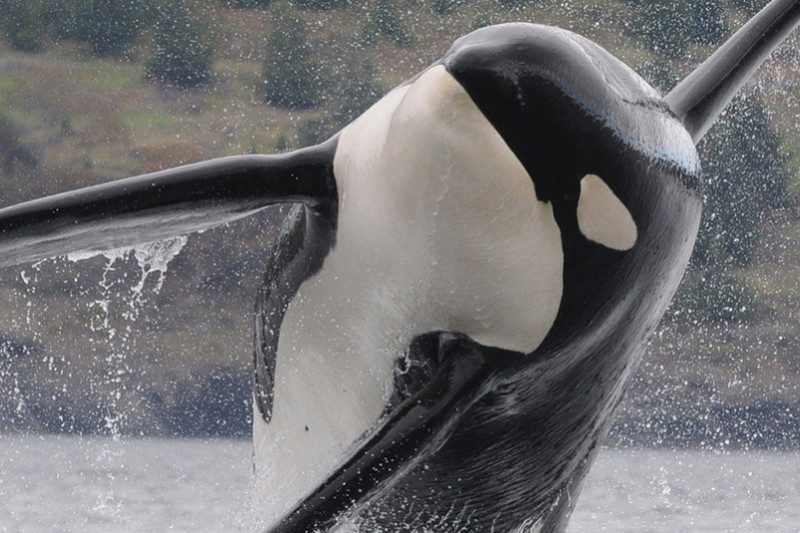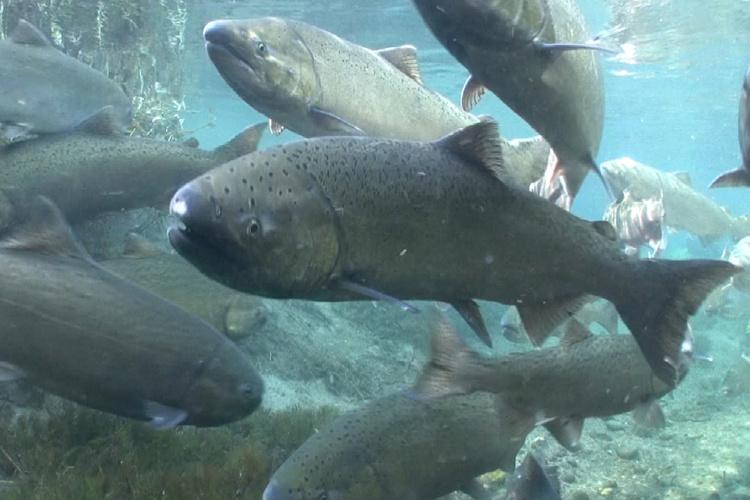King salmon fishing could be cut back from Puget Sound to Monterey Bay if king salmon numbers fall too low to feed the 75 endangered Southern Resident orcas, under a plan approved Sept. 14 by NMFS.
Non-tribal fishing would be restricted when king salmon numbers appear heading toward that threshold — a key recommendation from a working group convened by the Pacific Fishery Management Council, including representatives from West Coast states, tribes, and NMFS.
In late 2020 the council adopted the work group’s suggestions, including limiting commercial and recreational fishing in certain places off California, Oregon, and Washington when estimated king salmon numbers north of Cape Falcon, Oregon, fall below a certain level of abundance.
That level would be set as the average of the seven lowest years of forecast king salmon abundance off the northern Oregon and Washington coasts, currently estimated at 966,000. In recent years salmon numbers held above that level, and 2007 was the last year when forecasts would have fallen below the threshold.
The concern remains that a drop in abundance will make it harder for orcas to find food, leading to a decline in their health, reproduction and survival.

“The goal of the proposal is to reduce impacts on chinook salmon fisheries that meet the prey needs of Southern Resident killer whales when prey abundance is low, while still providing fishing opportunities,” according to a NMFS summary from June 2021.
Two of the three pods of Southern Resident orcas spend much of the winter and spring foraging for multiple runs of salmon and other species off the West Coast as far south as Monterey Bay, Calif., and as far north as Southeast Alaska.
A third pod forages more in inland and Canadian waters, and also relies on a mix of salmon stocks from West Coast rivers.
Potential new conservation measures if low king salmon abundance looms would include:
• Reduce fishing quotas north of Cape Falcon, Oregon
• Close areas off the Columbia River and Grays Harbor to all but tribal treaty fishing until June 15
• Delay the ocean commercial troll fishery between Cape Falcon and the California/Oregon border until April 1
• Close areas off the Klamath River and Monterey Bay in California to recreational and commercial salmon fishing from October 1 to March 31
The council will also reconsider established conservation objectives for Sacramento and Klamath River fall-run salmon that contribute substantially to West Coast fisheries. The goal would be for higher salmon returns that could benefit the endangered Southern Residents and the fishing fleet.
In August the Biden administration extended critical habitat designations for the Southern Resident population to cover nearly 16,000 square miles of Pacific waters from Washington south to Point Sur, Calif.
That extension took effect Sept. 1, maintains the Puget Sound protected region, and extends the critical habitat designation out to the 200-meter (656-foot) sea floor contour.







